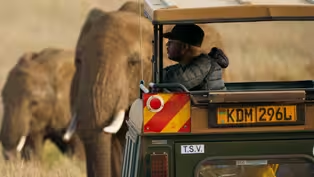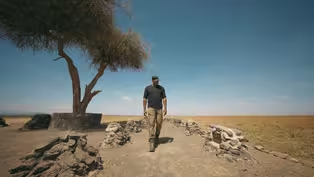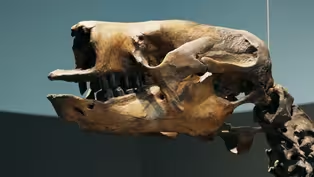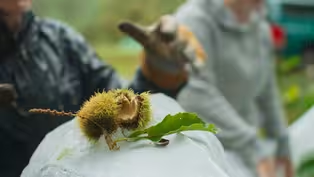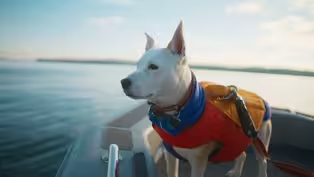
The Northern White Rhino Rescue Mission
Clip: Season 2 Episode 6 | 11m 4sVideo has Closed Captions
Scientists fight to revive the northern white rhino — before it’s too late.
The northern white rhino teeters on the brink of extinction. At Ol Pejeta Conservancy and the San Diego Zoo’s Frozen Zoo, scientists, vets, and caregivers like Zach Mutai, Marlys Houck, and Dr. Florence Kang’ethe are racing against time to bring the species back. Through groundbreaking science and deep compassion, they’re writing a hopeful final chapter — before the book closes for good.
Problems playing video? | Closed Captioning Feedback
Problems playing video? | Closed Captioning Feedback

The Northern White Rhino Rescue Mission
Clip: Season 2 Episode 6 | 11m 4sVideo has Closed Captions
The northern white rhino teeters on the brink of extinction. At Ol Pejeta Conservancy and the San Diego Zoo’s Frozen Zoo, scientists, vets, and caregivers like Zach Mutai, Marlys Houck, and Dr. Florence Kang’ethe are racing against time to bring the species back. Through groundbreaking science and deep compassion, they’re writing a hopeful final chapter — before the book closes for good.
Problems playing video? | Closed Captioning Feedback
How to Watch Human Footprint
Human Footprint is available to stream on pbs.org and the free PBS App, available on iPhone, Apple TV, Android TV, Android smartphones, Amazon Fire TV, Amazon Fire Tablet, Roku, Samsung Smart TV, and Vizio.
Buy Now
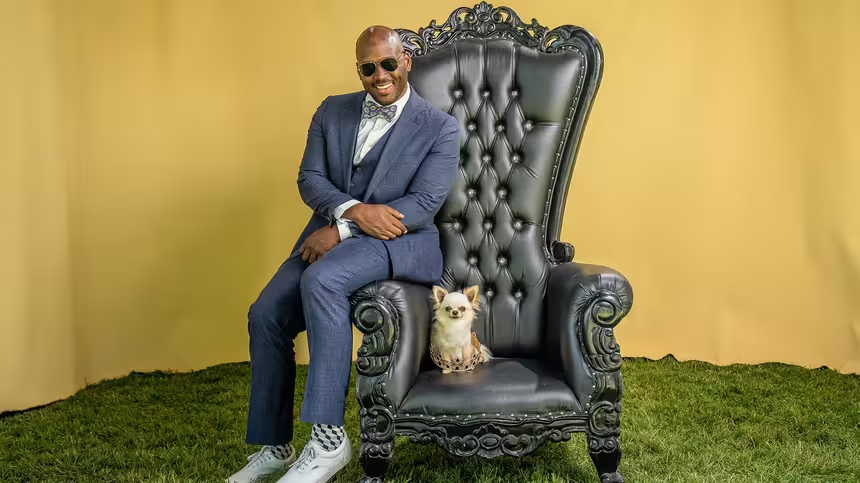
Surprising Moments from Human Footprint
Do you think you know what it means to be human? In Human Footprint, Biologist Shane Campbell-Staton asks us all to think again. As he discovers, the story of our impact on the world around us is more complicated — and much more surprising — than you might realize.Providing Support for PBS.org
Learn Moreabout PBS online sponsorship(serene music) (Shane) With more than 650 species-- many rare or endangered-- the San Diego Zoo offers a window into our planet’s living diversity.
But behind the public exhibits, there’s another zoo with specimens found nowhere else.
(Marlys) So, these are our cryo tanks, this is where we keep the samples, living dividing cells from all of the 11,000 individuals and 1,300 species and subspecies, all in primarily three tanks.
(calm rhythmic music) (Shane) If the Frozen Zoo had a zookeeper, it would be Marlys Houck.
♪ Her bespoke beaded wine glass charms keep her guests from mixing up their drinks.
♪ And that attention to detail pays off at work, too.
♪ (Marlys) So, in there is the liquid nitrogen.
Each one of these vials contains about one to three million living cells.
(Shane) Oh, wow.
Today, the Frozen Zoo is the largest, most diverse, and longest-running cryobank in the world.
But when it started in the 1970s, its ambitions felt like science fiction.
(Marlys) It was started by Dr. Kurt Benirschke in 1975.
He had the idea that because we had this new technology where you could grow cells from skin biopsies that we should do this and bank them because we don’t really know how technology will evolve in the future and what those cells could be used for.
(Shane) The samples here aren’t just on ice.
While many of the animals they came from are dead, the cells stored here are very alive.
(Marlys) If you just take a skin biopsy and throw it in the freezer, it will form ice crystals.
And the ice will pierce the cell membrane, destroy the cell, it will no longer be living.
So, we have to go through this process of adding a cryoprotectant.
It’s kind of like an antifreeze... and then they have to be frozen at -196 °C in liquid nitrogen.
And they’re just resting there without aging.
And then, when we pull them back out, they start growing and dividing again.
That’s incredible.
Marlys joined the Frozen Zoo because of her concern for one species in particular.
(Marlys) When I came, there were probably 60 northern white rhinos.
I never would have thought when I first came that I would be watching the extinction of one of the animals I was working with.
(Shane) But that’s exactly what happened.
So, this box is really special.
Maybe you can read what species?
(Shane) Northern white rhino.
(Marlys) Right, and these are not just any northern white rhino, they are Sudan, the last male of the species.
(downbeat music) Put that on... and then you can just go like that.
♪ You are holding living cells of Sudan, the last male northern white rhino of the species.
What does that feel like?
Really intense, actually.
Wow.
(sighs) -Thank you.
-Yeah.
♪ (Shane) His cells may still be alive, but Sudan, the rhino, died on the other side of the globe, with the whole world watching.
♪ (Zach) I’ve been looking after these northern white rhinos for 16 years now.
I consider these rhinos as my second part of my family.
(fast tempo music) ♪ (Shane) Meet Zach Mutai.
He started here as a fence builder, but soon became a ranger, and eventually, a caregiver to the last northern white rhinos.
♪ The day Sudan died, Zach was by his side.
(Zach) I spent, like, nine years taking care of Sudan until he passed away on 19th of March day of 2018.
(camera snaps) (melancholic music) (Shane sighs) That must have been a really intense experience.
Yeah...it was such a difficult day.
It was really sad.
Losing a rhino to me is more like losing one of my family members, and it was really such sad news by losing the last male of its kind.
It really shook the whole world.
(news anchor) The world’s last male northern white rhino has died, leaving only two females.
(dramatic music) (Shane) Ol Pejeta is one of the world’s most important wildlife conservancies.
Yet even here, under constant surveillance, rhinos aren’t always safe.
(clicking sound) ♪ At the turn of the 20th century, half a million rhinos roamed Africa and Asia.
But wars, habitat loss, and most of all, poaching for their horns caused catastrophic declines.
Driven by false beliefs of rhino horn’s healing powers and its luxury status, illegal markets have fueled a deadly trade.
Today, only 5% of rhinos that existed a century ago remain.
The last wild northern white rhinos were killed in the early 2000s.
In a desperate attempt to keep the species alive, conservationists transported the final captive individuals from a zoo in the Czech Republic to create a breeding program here.
Among them were Sudan and two females.
(Zach) So, this is Najin, uh, the mama, and her daughter Fatu is the other one.
And this is their friend, a southern white rhino.
-Okay.
-Yeah.
She’s a good friend and a trainer for them because these two, they were raised in captivity and they never know how to do all natural things like grazing, socializing, and all other natural activities.
Hi, good girl.
I know.
Have you ever feel and touch a rhino?
(Shane) No.
(Zach) You can just come closer to me, you can just feel.
(serene music) Kind of here, just.
♪ It’s quite soft behind the ears but the rest part of the body is quite rough and thick skin.
(Shane) Yeah.
♪ (Zach) Fatu, no.
I think I just fell in love.
♪ (Zach) Fatu, good girl, Fatu.
♪ (Shane) This is one of the most incredible experiences.
(Zach) Could you imagine that you are watching the last two of their kind?
(Shane) Yeah, that’s... (Zach) And they are being killed only for the two horns and nothing else.
(Shane) Yeah.
(Zach) We have got only the last two in the whole entire planet.
If anything happens and they are gone, there will be no more northern white rhinos species.
I’ve come to realize that extinction is something real, and we have just learned that we are the most dangerous creatures on this planet, yeah.
(rhino grunts) ♪ Man, this... this is intense.
And... ♪ ...you can’t help but look at these just big, beautiful animals and just... like, what... what do we do?
♪ How did we get here?
♪ We are a hell of a conundrum as a species.
One hell of a conundrum.
♪ Just like, we’ve had so many opportunities to correct our actions, like-- (rhino farting repeatedly) (farting continues unabated) Wow.
That’s impressive.
(soulful music) Even if there were a male of their kind, Najin and Fatu aren’t healthy enough to have babies.
But that’s not stopping scientists from trying this species alive.
(Dr. Florence) Every experience I have is so surreal.
It’s so amazing to be working with such big animals.
So, you basically have the coolest job in the world.
(Dr. Florence) Mm-hmm.
(laughter) (Shane) As one of Ol Pejeta’s resident veterinarians, Dr. Florence Kang’ethe has a big job.
From health check-ups with the conservancy’s anti-poaching dogs, to wound care with a blind and very grumpy black rhino, her to-do list is long.
At the top of it is saving the northern white rhino.
(Dr. Florence) Today, I had to be here early to do stimulations.
So, that involves me injecting a hormone.
(Shane) Dr. Florence is part of a groundbreaking initiative that aims to bring baby northern white rhinos back into the world.
Using cryo-preserved sperm from deceased males, researchers fertilize eggs collected from the last females to create embryos, which they can implant into surrogate females of the closely related southern white rhino.
♪ (Dr. Florence) It’s sad that we have come to that point where we have to do such efforts, but we’re quite hopeful that soon we shall be talking about a northern white rhino baby running around, yeah.
(Shane) If, for whatever reason, the northern white rhino were to go extinct without a baby coming to be, what will we have lost?
We would have lost the chance to redeem ourselves.
(soulful music) (Shane) The people fighting to save these rhinos embody humanity’s compassion for wild species, yet this species’ story also reveals our capacity and willingness to destroy them.
♪
Video has Closed Captions
Clip: S2 Ep6 | 5m 14s | Kenyan farmers and rangers balance danger and devotion in their fight to coexist with elephants. (5m 14s)
Video has Closed Captions
Preview: S2 Ep6 | 30s | Shane meets species on the brink of oblivion, and the people who won’t let them slip away. (30s)
Fossils in the Asphalt: Unearthing LA’s Ancient Past
Video has Closed Captions
Clip: S2 Ep6 | 3m 5s | At La Brea Tar Pits, Emily Lindsey digs into Ice Age life beneath LA’s surface. (3m 5s)
The Ghost Tree: Bringing Back the American Chestnut
Video has Closed Captions
Clip: S2 Ep6 | 8m 15s | Sara Fitzsimmons fights to resurrect a tree that once ruled the eastern U.S. forests. (8m 15s)
Orca SOS: Sniffing Out Clues to Save the Southern Residents
Video has Closed Captions
Clip: S2 Ep6 | 3m 7s | Deborah Giles and her dog Eba track whale poop to help save endangered orcas. (3m 7s)
Providing Support for PBS.org
Learn Moreabout PBS online sponsorship
- Science and Nature

Capturing the splendor of the natural world, from the African plains to the Antarctic ice.

- Science and Nature

Explore scientific discoveries on television's most acclaimed science documentary series.
Winnipeg In Bloom











Support for PBS provided by:
